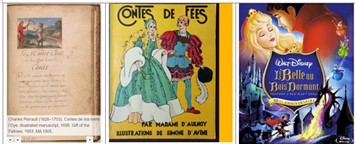Fairy tales

'Fairy tales, even literary versions crafted by a single identifiable author, are not unique or original stories. They migrate and mutate across national borders and time periods to produce a dizzying array of narrative variations. [...] Fairy-tale conventions often wander from their narrative home to cross-pollinate a diverse range of literary and cultural genres including novels, television, popular music, and advertising [...] It is our familiarity with the form and elements of fairy tales that gives them their power. To tell a fairy tale is to engage with a long history of storytelling in which meaning is created by constant revision of a classic form.'
Bronwyn Reddan
'Since the fairy tales of Perrault and the women writers of the salons were created at the point in history when more and more European writers began composing explicitly for children as separate entities and when standards were first being set for the development of modern children’s literature, their works must be viewed as part of a larger social phenomenon. In fact, they were responsible for a veritable deluge of literary fairy tales
in the eighteenth century that was to take a more definite shape in children’s literature and popular chapbooks in the nineteenth century throughout Europe and North America.'
Jack Zipes
Perrault wrote for the late 17th-century salon, for adults and for children; Mme d'Aulnoy, writing at the same time, was responsible for coining the term fairy tale in her 1697-98 collection Les Contes de fée. Some of these tales were new, others were literary versions of traditional oral tales. What do they tell us about family roles and aspirations in this period?
